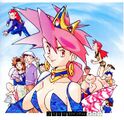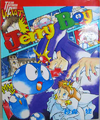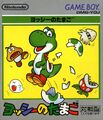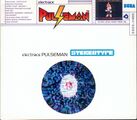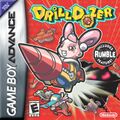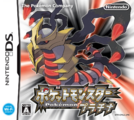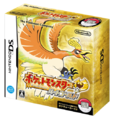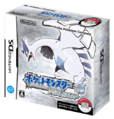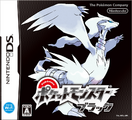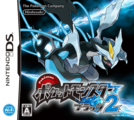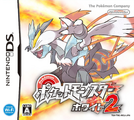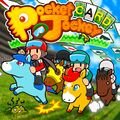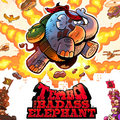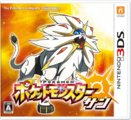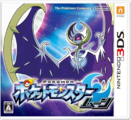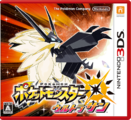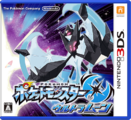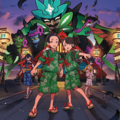Game Freak: Difference between revisions
mNo edit summary |
|||
| Line 17: | Line 17: | ||
Game Freak acquired the mobile development company Koa Games in October 2015.<ref>[https://gamebiz.jp/news/151524 ''Game Freak, known as "Pokémon" development company, merged with smartphone game development company Koa Games...'' - gamebiz.jp]</ref> | Game Freak acquired the mobile development company Koa Games in October 2015.<ref>[https://gamebiz.jp/news/151524 ''Game Freak, known as "Pokémon" development company, merged with smartphone game development company Koa Games...'' - gamebiz.jp]</ref> | ||
==Early History== | |||
==Satoshi Tajiri's background== | ===Satoshi Tajiri's background=== | ||
The origin of the name "Game Freak" refers to a nickname used in Japan to refer to avid arcade game fans during the 1980s. At this point, competitive players including children used the term Urawaza (Japanese: 裏技, ''Secret Technique'') in the context of video game strategy, although {{wp|Masanobu Endo}} (creator of {{wp|Xevious}} himself) was not a fan of the potential conflict at the arcades (this atmosphere is also covered in Satoshi Tajiri's 1990 book about his youth as an arcade game fan "[https://www.amazon.co.jp/パックランドでつかまえて―テレビゲームの青春物語-田尻-智/dp/4880638242 A Catcher in Pac-Land]" (Japanese: パックランドでつかまえて), as this included video game secrets that were proven to be false (such as the Xevious Star (Japanese: ゼビウス星)) and their veracity was subject to heated debate. He also did not want players to be spreading falsehoods and reportedly got angry regarding an interview about Xevious Star, but at the same time settled fans down from arguing during a visit. Another issue is that some of these techniques were (sometimes unknowingly) actually bugs (glitches) in the code.<ref>[https://www.kinephanos.ca/2015/game-freaks-who-play-with-bugs/ The Game Freaks Who Play With Bugs – Discussions on the Video Game Xevious] (Japanese: ゲームフリークはバグと戯れる―ビデオゲーム「ゼビウス」論) (Nakazawa Shinichi) (1984) (Translations from Jérémie Pelletier-Gagnon and Tsugumi Okabe for Geemu Media Mix Volume 5, Issue 1, December 2015, University of Alberta, Edmonton, Alberta, Canada)</ref> | The origin of the name "Game Freak" refers to a nickname used in Japan to refer to avid arcade game fans during the 1980s. At this point, competitive players including children used the term Urawaza (Japanese: 裏技, ''Secret Technique'') in the context of video game strategy, although {{wp|Masanobu Endo}} (creator of {{wp|Xevious}} himself) was not a fan of the potential conflict at the arcades (this atmosphere is also covered in Satoshi Tajiri's 1990 book about his youth as an arcade game fan "[https://www.amazon.co.jp/パックランドでつかまえて―テレビゲームの青春物語-田尻-智/dp/4880638242 A Catcher in Pac-Land]" (Japanese: パックランドでつかまえて), as this included video game secrets that were proven to be false (such as the Xevious Star (Japanese: ゼビウス星)) and their veracity was subject to heated debate. He also did not want players to be spreading falsehoods and reportedly got angry regarding an interview about Xevious Star, but at the same time settled fans down from arguing during a visit. Another issue is that some of these techniques were (sometimes unknowingly) actually bugs (glitches) in the code.<ref>[https://www.kinephanos.ca/2015/game-freaks-who-play-with-bugs/ The Game Freaks Who Play With Bugs – Discussions on the Video Game Xevious] (Japanese: ゲームフリークはバグと戯れる―ビデオゲーム「ゼビウス」論) (Nakazawa Shinichi) (1984) (Translations from Jérémie Pelletier-Gagnon and Tsugumi Okabe for Geemu Media Mix Volume 5, Issue 1, December 2015, University of Alberta, Edmonton, Alberta, Canada)</ref> | ||
| Line 30: | Line 27: | ||
Furthermore, Tajiri stated in a May 2000 interview at Game Freak headquarters that the concept for the Pokémon {{p|Mew}} (although [[Shigeki Morimoto]] programmed and designed it into the game) as an "illusory Pokémon" was inspired by rumors at the arcades (including from the Game Freaks), specifically a hidden/unused F4 phantom fighter ship in Xevious. This was republished for a Japan-exclusive December 2000 book called [https://www.amazon.co.jp/ポケモン・ストーリー-畠山-けんじ/dp/4822241998 Pokémon Story].<ref>[https://www.youtube.com/watch?v=esIL1W_QBns Mew's Origins: A Story of Secrets, Rumors & Legends Ft. maxmoefoe (Pokémon) - DidYouKnowGaming?]</ref> | Furthermore, Tajiri stated in a May 2000 interview at Game Freak headquarters that the concept for the Pokémon {{p|Mew}} (although [[Shigeki Morimoto]] programmed and designed it into the game) as an "illusory Pokémon" was inspired by rumors at the arcades (including from the Game Freaks), specifically a hidden/unused F4 phantom fighter ship in Xevious. This was republished for a Japan-exclusive December 2000 book called [https://www.amazon.co.jp/ポケモン・ストーリー-畠山-けんじ/dp/4822241998 Pokémon Story].<ref>[https://www.youtube.com/watch?v=esIL1W_QBns Mew's Origins: A Story of Secrets, Rumors & Legends Ft. maxmoefoe (Pokémon) - DidYouKnowGaming?]</ref> | ||
==GAME FREAK magazine== | Other than Game Freak magazine, Satoshi Tajiri was also the author of the 1990 book "A Catcher in Pac-Land" and the 1995 book New Game Design. There was also a (possibly internal) 1993 Game Freak New Year postcard by Ken Sugimori thanking someone for their help the previous year (also revealing prerelease art of Kangaskhan and Exeggutor). This was later revealed to the public in a special 1999 edition of Game Freak magazine, though the official scan may only be in black and white. | ||
===GAME FREAK magazine=== | |||
It was also around this time that arcade game fans wanted to know how video games worked and to compete as Game Freaks. Notably, Xevious expert at the time {{Jwp|大堀康祐|Yasuhiro Ohori (Japanese: 大堀康祐)}} (pseudonym Urusei Anzu) discovered how to score 10 million points in Xevious with the help of programming errors, and had his {{Jwp|ミニコミ|Mini-Comi}} "How to Score 10 Million Points in Xevious" (Japanese: ゼビウス1000万点への解法) published with fellow Game Freak Naohiko Nakagane (Japanese: 中金直彦). Coinciding with the Game Freak magazine series, Game Freak magazine republished their own version of the original as well. | It was also around this time that arcade game fans wanted to know how video games worked and to compete as Game Freaks. Notably, Xevious expert at the time {{Jwp|大堀康祐|Yasuhiro Ohori (Japanese: 大堀康祐)}} (pseudonym Urusei Anzu) discovered how to score 10 million points in Xevious with the help of programming errors, and had his {{Jwp|ミニコミ|Mini-Comi}} "How to Score 10 Million Points in Xevious" (Japanese: ゼビウス1000万点への解法) published with fellow Game Freak Naohiko Nakagane (Japanese: 中金直彦). Coinciding with the Game Freak magazine series, Game Freak magazine republished their own version of the original as well. | ||
The first Game Freak magazine (1983) featured Taizo Hori from {{wp|Dig Dug}} on the front cover, and mentioned "'''Tajiri Corp.'''" (although at the time, it was not an official corporation/company until 1989, also changing its name to Game Freak Co.). Run chiefly by Tajiri, with art made by Sugimori, the magazines typically were released at a length of around 28 pages and at a price of ¥300 (roughly US$3). Initially, the magazine was handwritten, but Tajiri later outsourced this to a professional printing company. | The first Game Freak magazine (1983) featured Taizo Hori from {{wp|Dig Dug}} on the front cover, and mentioned "'''Tajiri Corp.'''" (although at the time, it was not an official corporation/company until 1989, also changing its name to Game Freak Co.). Run chiefly by Tajiri, with art made by Sugimori, the magazines typically were released at a length of around 28 pages and at a price of ¥300 (roughly US$3). Initially, the magazine was handwritten, but Tajiri later outsourced this to a professional printing company. | ||
<gallery widths=150> | |||
GameFreakCover1.jpg|Covers for volumes 4, 5, 7, and 8 of GAME FREAK magazine | |||
GameFreakCovers2.jpg|Covers for volumes 13, 14, and 16 of Game Freak magazine | |||
</gallery> | |||
==Pre-Pokémon== | |||
===Quinty=== | |||
In 1989, Tajiri published and directed GAME FREAK's first video game, Quinty, (Japanese: '''クインティ''') for the Famicom. The player's character, Carton, ("Bon-Bon" in the American release) must rescue his girlfriend Jenny from his younger sister, Quinty, who is jealous of the attention that Jenny gets from him. Quinty can be played cooperatively, and involves a player(s) flipping adjacent tiles from a top-down perspective to throw the enemies into walls, where defeating all of them will finish the stage. Each world has ten individual levels with a variety of enemies that all have unique abilities, before battling Quinty at the end of the game. | In 1989, Tajiri published and directed GAME FREAK's first video game, Quinty, (Japanese: '''クインティ''') for the Famicom. The player's character, Carton, ("Bon-Bon" in the American release) must rescue his girlfriend Jenny from his younger sister, Quinty, who is jealous of the attention that Jenny gets from him. Quinty can be played cooperatively, and involves a player(s) flipping adjacent tiles from a top-down perspective to throw the enemies into walls, where defeating all of them will finish the stage. Each world has ten individual levels with a variety of enemies that all have unique abilities, before battling Quinty at the end of the game. | ||
The game features the earliest known work by [[Junichi Masuda]], who composed the entirety of the soundtrack, being aided in sound-effects by Yuji Shingai and Akihito Koriyama. The soundtrack is generally rather upbeat, with a couple of songs that appear to sound much like Masdua's later work - most notably the track '''Battle! (Boss)''' being similar to a combination of '''A Rival Appears''' from [[Pokémon Red & Pokémon Green: Super Music Collection|Pokémon Red and Blue]] and '''A Rival Appears!''' from [[Pokémon HeartGold & Pokémon SoulSilver: Super Music Collection|Pokémon Gold and Silver]]. | The game features the earliest known work by [[Junichi Masuda]], who composed the entirety of the soundtrack, being aided in sound-effects by Yuji Shingai and Akihito Koriyama. The soundtrack is generally rather upbeat, with a couple of songs that appear to sound much like Masdua's later work - most notably the track '''Battle! (Boss)''' being similar to a combination of '''A Rival Appears''' from [[Pokémon Red & Pokémon Green: Super Music Collection|Pokémon Red and Blue]] and '''A Rival Appears!''' from [[Pokémon HeartGold & Pokémon SoulSilver: Super Music Collection|Pokémon Gold and Silver]]. | ||
[[Ken Sugimori]] would provide illustrations for both the box-art and manual, as well as a long-running Quinty manga that released in regular intervals for a few years following the launch of the game. Towards the manga's conclusion, a variety of characters would later resemble designs used in Pokémon, (albeit likely unintentionally) such as the [[Generation I]] [[Roughneck (Trainer class)|Cue Ball]] or [[Swimmer (Trainer class)|Swimmer]]. It was later localized as {{wp|Mendel Palace}} for its North American release in 1990, which had all of its promotional artwork by [[Ken Sugimori|Sugimori]] redrawn for the western market, as well as a change in almost character name. | [[Ken Sugimori]] would provide illustrations for both the box-art and manual, as well as a long-running Quinty manga that released in regular intervals for a few years following the launch of the game. Towards the manga's conclusion, a variety of characters would later resemble designs used in Pokémon, (albeit likely unintentionally) such as the [[Generation I]] [[Roughneck (Trainer class)|Cue Ball]] or [[Swimmer (Trainer class)|Swimmer]]. It was later localized as {{wp|Mendel Palace}} for its North American release in 1990, which had all of its promotional artwork by [[Ken Sugimori|Sugimori]] redrawn for the western market, as well as a change in almost character name. | ||
= | <gallery widths=150> | ||
Quinty Box Art.png|Box-art of Quinty, drawn by [[Ken Sugimori]] | |||
Quinty Box Art NA.png|North American Box-art of Quinty | |||
Quinty Manga Ending.jpg|Final page of the Quinty manga, drawn by [[Ken Sugimori]] | |||
</gallery> | |||
==Jerry Boy== | ===Jerry Boy=== | ||
To help finance their work on [[Capsule Monsters|what would later become Pokémon,]] GAME FREAK created a variety of games for other consoles whilst they worked on [[Generation I]] for over six-years. The first of these games was a cutesy 2D-platformer known as Jerry Boy (Japanese: ジェリーボーイ) for the Super Famicom in 1991. According to the credits, this job was shared with {{wp|System Sacom}}, who handled the actual programming whilst the game design was done at GAME FREAK. The player controls a young boy named Jerry, who is transformed into a blob by an evil wizard at the behest of his jealous brother, Tom, who has a crush on the young princess Emi. | To help finance their work on [[Capsule Monsters|what would later become Pokémon,]] GAME FREAK created a variety of games for other consoles whilst they worked on [[Generation I]] for over six-years. The first of these games was a cutesy 2D-platformer known as Jerry Boy (Japanese: ジェリーボーイ) for the Super Famicom in 1991. According to the credits, this job was shared with {{wp|System Sacom}}, who handled the actual programming whilst the game design was done at GAME FREAK. The player controls a young boy named Jerry, who is transformed into a blob by an evil wizard at the behest of his jealous brother, Tom, who has a crush on the young princess Emi. | ||
According to Tajiri, Jerry Boy's development spanned over two years, beginning about a year and a half before the release of the Super Famicom. <ref name=TSI1993JerryBoy>[https://web.archive.org/web/20230215130305/https://www.chrismcovell.com/JBTribute/interview.html]</ref> Tajiri worked at Epic Sony as somewhat of an advisor, and heard around the office that the company wanted to have some games to release alongside the Super Famicom, given that they were responsible for developing the system's sound chip. Sugimori and Tajiri initially envisioned the game as an action-RPG featuring a slime as a playable character, which later grew into a platformer after realizing how they could use the shapeless design of a blob as part of the gameplay. The small team intentionally designed a far larger, more action-oriented game as a response to Quinty's poor sales on the Famicom, with roughly 200 sprites for the main character alone, as well as early plans that would allow the player to split into several smaller pieces, though this was later scrapped as a result of complications with the player's movement. At one point, Jerry was also able to change colors which was also removed during development, though this may have inspired some of the other designs for the sequel.<ref name=TSI1993JerryBoy/> | According to Tajiri, Jerry Boy's development spanned over two years, beginning about a year and a half before the release of the Super Famicom. <ref name=TSI1993JerryBoy>[https://web.archive.org/web/20230215130305/https://www.chrismcovell.com/JBTribute/interview.html]</ref> Tajiri worked at Epic Sony as somewhat of an advisor, and heard around the office that the company wanted to have some games to release alongside the Super Famicom, given that they were responsible for developing the system's sound chip. Sugimori and Tajiri initially envisioned the game as an action-RPG featuring a slime as a playable character, which later grew into a platformer after realizing how they could use the shapeless design of a blob as part of the gameplay. The small team intentionally designed a far larger, more action-oriented game as a response to Quinty's poor sales on the Famicom, with roughly 200 sprites for the main character alone, as well as early plans that would allow the player to split into several smaller pieces, though this was later scrapped as a result of complications with the player's movement. At one point, Jerry was also able to change colors which was also removed during development, though this may have inspired some of the other designs for the sequel.<ref name=TSI1993JerryBoy/> | ||
The artwork was sketched in the style of 2D-animation before being translated to game sprites, as opposed to the typical process of drawing the sprites first. Tajiri mentioned that Jerry's design would probably resemble {{wp|Akira Toriyama}}'s design of a Slime from the {{wp|Dragon Quest}} series for those already familiar with games, so the team decided to make him appear cuter to appeal to women or young children.<ref name=TSI1993JerryBoy/> Both Sugimori and Tajiri lamented the lack of difficulty for the final release of the game, with the bosses being highlighted as an example of poor balancing. When brought to the Super Nintendo under {{wp|Smart Ball}} in 1992, all content relating to the story and every village section was strangely removed, with the game's box-art and promotional material again being redrawn from Sugimori's original work. | The artwork was sketched in the style of 2D-animation before being translated to game sprites, as opposed to the typical process of drawing the sprites first. Tajiri mentioned that Jerry's design would probably resemble {{wp|Akira Toriyama}}'s design of a Slime from the {{wp|Dragon Quest}} series for those already familiar with games, so the team decided to make him appear cuter to appeal to women or young children.<ref name=TSI1993JerryBoy/> Both Sugimori and Tajiri lamented the lack of difficulty for the final release of the game, with the bosses being highlighted as an example of poor balancing. When brought to the Super Nintendo under {{wp|Smart Ball}} in 1992, all content relating to the story and every village section was strangely removed, with the game's box-art and promotional material again being redrawn from Sugimori's original work. | ||
A short Jerry Boy manga following the events of the game was serialized in Family Computer Magazine between 1991 and 1992, which was collected and published into a single book alongside an additional '''Making of Jerry Boy''' story and a short '''Jerry Girl''' spin-off in 1993. <ref>https://web.archive.org/web/20230411160732/https://www.chrismcovell.com/JBTribute/comicbook.html</ref> All of the various Jerry Boy manga was illustrated by Sugimori, whose style remains similar to that of the Quinty manga that ran at the same time. Likely as a result of the far simpler character design, Sugimori opts to draw characters with far thicker line weight here, combined with smaller paneling to better highlight the more frequent action. | A short Jerry Boy manga following the events of the game was serialized in Family Computer Magazine between 1991 and 1992, which was collected and published into a single book alongside an additional '''Making of Jerry Boy''' story and a short '''Jerry Girl''' spin-off in 1993. <ref>https://web.archive.org/web/20230411160732/https://www.chrismcovell.com/JBTribute/comicbook.html</ref> All of the various Jerry Boy manga was illustrated by Sugimori, whose style remains similar to that of the Quinty manga that ran at the same time. Likely as a result of the far simpler character design, Sugimori opts to draw characters with far thicker line weight here, combined with smaller paneling to better highlight the more frequent action. | ||
The game's soundtrack was composed by Hirohiko Fukuda, Manabu Saito and Akira Yamaoka, likely as a result of it's co-development. This marks the first GAME FREAK game not to feature compositions from Junichi Masuda. | The game's soundtrack was composed by Hirohiko Fukuda, Manabu Saito and Akira Yamaoka, likely as a result of it's co-development. This marks the first GAME FREAK game not to feature compositions from Junichi Masuda. | ||
= | <gallery widths=150> | ||
[[ | Jerry Boy Box Art.jpg|Box-art of Jerry Boy, drawn by [[Ken Sugimori]] | ||
Jerry Boy Box Art NA.png|North American Box-art of Jerry Boy | |||
Jerry Boy Manga Cover.png|Cover of the Jerry Boy manga, drawn by [[Ken Sugimori]] | |||
Jerry Girl Manga Chapter Cover.png|Chapter cover of the Jerry Girl spin-off manga, drawn by [[Ken Sugimori]] | |||
</gallery> | |||
===Jerry Boy 2=== | |||
Some time between 1994 and 2000, a near-finished prototype of a Jerry Boy sequel, known as Jerry Boy 2 was released online. <ref>https://web.archive.org/web/20230411163827/https://snescentral.com/article.php?id=1107</ref> According to {{wp|Electronic Gaming Monthly}}, the game was set to be released in September of 1994, but went on to be cancelled for unknown reasons. Although Ken Sugimori remained as character designer on the sequel, Tajiri only supervised the project, which was largely co-produced. Takashi Fukushima took upon the role of the game's director suggesting that the co-production may have been with {{wp|Telenet Japan}}'s Team Riot, of which many members would leave to form {{wp|Media.Vision}} during the game's development, something that may have played a part in its cancellation. Another leading presumption among fans is that the falling out between [[Nintendo]] and {{wp|Sony}} was to blame, (given the time period) but this is also speculation. The story was written by new GAME FREAK recruit Ryosuke Taniguchi, who would go on to become a scenario writer on {{wp|Pulseman}} and [[Pokémon Red and Green Versions|Pokémon Red & Green.]] | Some time between 1994 and 2000, a near-finished prototype of a Jerry Boy sequel, known as Jerry Boy 2 was released online. <ref>https://web.archive.org/web/20230411163827/https://snescentral.com/article.php?id=1107</ref> According to {{wp|Electronic Gaming Monthly}}, the game was set to be released in September of 1994, but went on to be cancelled for unknown reasons. Although Ken Sugimori remained as character designer on the sequel, Tajiri only supervised the project, which was largely co-produced. Takashi Fukushima took upon the role of the game's director suggesting that the co-production may have been with {{wp|Telenet Japan}}'s Team Riot, of which many members would leave to form {{wp|Media.Vision}} during the game's development, something that may have played a part in its cancellation. Another leading presumption among fans is that the falling out between [[Nintendo]] and {{wp|Sony}} was to blame, (given the time period) but this is also speculation. The story was written by new GAME FREAK recruit Ryosuke Taniguchi, who would go on to become a scenario writer on {{wp|Pulseman}} and [[Pokémon Red and Green Versions|Pokémon Red & Green.]] | ||
Despite its cancellation, the only playable ROM of the game is largely complete, with the exception of some minor bugs. The plot follows a new main character known as Marine, who goes to visit "Jelly Land" with his four best friends and dog. They are halted by the evil wizard from the original Jerry Boy, and turned into different colored blobs. Determined to get their original bodies back, the cast ventures throughout the mysterious amusement park, facing the wizard at the very end. The game has had a complete overhaul from the original, with each character having various abilities that are required to progress, and are unlocked after saving them from a boss. Jerry Boy's 2 soundtrack was composed by Yoshinori Sunahara, Tetsuya Furumoto and Takafumi Fujisawa, the final of whom would go onto create the console start-up jingle for the {{wp|PlayStation}}, {{wp|PlayStation 2}} and {{wp|PlayStation 3.}} | Despite its cancellation, the only playable ROM of the game is largely complete, with the exception of some minor bugs. The plot follows a new main character known as Marine, who goes to visit "Jelly Land" with his four best friends and dog. They are halted by the evil wizard from the original Jerry Boy, and turned into different colored blobs. Determined to get their original bodies back, the cast ventures throughout the mysterious amusement park, facing the wizard at the very end. The game has had a complete overhaul from the original, with each character having various abilities that are required to progress, and are unlocked after saving them from a boss. Jerry Boy's 2 soundtrack was composed by Yoshinori Sunahara, Tetsuya Furumoto and Takafumi Fujisawa, the final of whom would go onto create the console start-up jingle for the {{wp|PlayStation}}, {{wp|PlayStation 2}} and {{wp|PlayStation 3.}} | ||
< | |||
<gallery widths=150> | |||
Jerry Boy 2 Promotional Flyer.png|The only known artwork for Jerry Boy 2, drawn by [[Ken Sugimori]] | |||
< | </gallery> | ||
===Yoshi=== | |||
==[[Generation I]]== | <gallery widths=150> | ||
Yoshi Box Art JP NES.jpg|Yoshi's Japanese Famicom Box-art drawn by {{wp|Yōichi Kotabe}} | |||
Yoshi Box Art US NES.jpg|Yoshi's North American NES Box-art drawn by {{wp|Yōichi Kotabe}} | |||
Yoshi Box Art JP GB.jpg|Yoshi's Japanese Game Boy Box-art drawn by {{wp|Yōichi Kotabe}} | |||
Yoshi GB (US).jpg|Yoshi's North American Game Boy Box-art drawn by {{wp|Yōichi Kotabe}} | |||
</gallery> | |||
===Magical Tarurūto-kun=== | |||
<gallery widths=150> | |||
Magical Taruruto-kun Box Art.png|Box-art of Magical Tarurūto-kun drawn by {{wp|Shigeyasu Yamauchi}} | |||
</gallery> | |||
===Mario & Wario=== | |||
<gallery widths=150> | |||
Mario & Wario Box Art.jpg|Box-art of Mario & Wario drawn by {{wp|Yōichi Kotabe}} | |||
</gallery> | |||
===Nontan to Issho: KuruKuru Puzzle=== | |||
<gallery widths=150> | |||
Nontan to Issho KuruKuru Puzzle Box Art.png|Box-art of Nontan to Issho: KuruKuru Puzzle drawn by {{wp|Sachiko Kiyono}} | |||
</gallery> | |||
===Pulseman=== | |||
<gallery widths=150> | |||
Pulseman Box Art.jpg|Box-art of Pulseman | |||
Electrace Pulseman Cover.jpg|Cover art for the Electrace Pulseman Album | |||
Pulseman Arrange Cover.png|Cover art for the PULSEMAN Arrange Album | |||
</gallery> | |||
==1996-1999== | |||
===[[Generation I]]=== | |||
{{main|Capsule Monsters}} | |||
Though the idea for what would become the Pokémon games had existed in Tajiri's mind for a while, actual development of the Pokémon idea began as [[Capsule Monsters]] in 1990. | Though the idea for what would become the Pokémon games had existed in Tajiri's mind for a while, actual development of the Pokémon idea began as [[Capsule Monsters]] in 1990. | ||
| Line 79: | Line 113: | ||
Though the franchise is currently one of the most successful in the world, development of {{game|Red and Green|s}} was incredibly difficult for the team at Game Freak, with the six-year development period and low finances of the company causing many of the staff to leave for other employment. Tajiri himself worked long hours, many of them unpaid, in order to bring Pokémon out, finally releasing them on February 27, 1996. An international success overnight, Game Freak became recognized as one of the best game developers Nintendo had working for them, leading to their second-party status. | Though the franchise is currently one of the most successful in the world, development of {{game|Red and Green|s}} was incredibly difficult for the team at Game Freak, with the six-year development period and low finances of the company causing many of the staff to leave for other employment. Tajiri himself worked long hours, many of them unpaid, in order to bring Pokémon out, finally releasing them on February 27, 1996. An international success overnight, Game Freak became recognized as one of the best game developers Nintendo had working for them, leading to their second-party status. | ||
< | <gallery widths=150> | ||
Red & Green Famitsu Promotional Flyer.png|Famitsu Promotional Flyer for [[Pokémon Red and Green Versions|Red and Green]] drawn by [[Ken Sugimori]] | |||
Red JP boxart.png|Box-art of [[Pokémon Red and Green Versions|Pokémon Red]] drawn by [[Ken Sugimori]] | |||
Green JP boxart.png|Box-art of [[Pokémon Red and Green Versions|Pokémon Green]] drawn by [[Ken Sugimori]] | |||
Blue JP boxart.png|Box-art of [[Pokémon Blue Version (Japanese)|Pokémon Blue]] drawn by [[Ken Sugimori]] | |||
Yellow JP boxart.png|Box-art of [[Pokémon Yellow Version|Pokémon Yellow]] drawn by [[Ken Sugimori]] | |||
</gallery> | |||
===Bazaar de Gosāru no Game de Gosāru=== | |||
< | <gallery widths=150> | ||
< | Bazaar de Gosaru no Game de Gosaru Box Art.jpg|Box-art of Bazaar de Gosāru no Game de Gosāru | ||
</gallery> | |||
==Cancelled PlayStation 4 RPG== | ===Bushi Seiryūden: Futari no Yūsha=== | ||
<gallery widths=150> | |||
Bushi Seiryuden Futari no Yusha Box Art.jpg|Box-art of Bushi Seiryūden: Futari no Yūsha drawn by [[Ken Sugimori]] | |||
</gallery> | |||
===Click Medic=== | |||
<gallery widths=150> | |||
Click Medic Box Art.jpg|Box-art of Click Medic | |||
</gallery> | |||
===[[Generation II]]=== | |||
<gallery widths=150> | |||
Gold JP boxart.png|Box-art of [[Pokémon Gold and Silver Versions|Pokémon Gold]] drawn by [[Ken Sugimori]] | |||
Silver JP boxart.png|Box-art of [[Pokémon Gold and Silver Versions|Pokémon Silver]] drawn by [[Ken Sugimori]] | |||
Crystal JP boxart.png|Box-art of [[Pokémon Crystal|Pokémon Crystal]] drawn by [[Ken Sugimori]] | |||
</gallery> | |||
==2000s== | |||
===[[Generation III]]=== | |||
<gallery widths=150> | |||
Ruby JP boxart.png|Box-art of [[Pokémon Ruby and Sapphire Versions|Pokémon Ruby]] drawn by [[Ken Sugimori]] | |||
Sapphire JP boxart.png|Box-art of [[Pokémon Ruby and Sapphire Versions|Pokémon Sapphire]] drawn by [[Ken Sugimori]] | |||
FireRed JP boxart.png|Box-art of [[Pokémon FireRed and LeafGreen Versions|Pokémon FireRed]] drawn by [[Ken Sugimori]] | |||
LeafGreen JP boxart.png|Box-art of [[Pokémon FireRed and LeafGreen Versions|Pokémon LeafGreen]] drawn by [[Ken Sugimori]] | |||
Emerald JP boxart.png|Box-art of [[Pokémon Emerald|Pokémon Emerald]] drawn by [[Ken Sugimori]] | |||
</gallery> | |||
===Drill Dozer=== | |||
<gallery widths=150> | |||
Drill Dozer JP Box Art.jpg|Japanese Box-art of Drill Dozer, drawn by [[Ken Sugimori]] | |||
Drill Dozer US Box Art.jpg|North American Box-art of Drill Dozer, drawn by [[Ken Sugimori]] | |||
</gallery> | |||
===[[Generation IV]]=== | |||
<gallery widths=150> | |||
Diamond JP boxart.png|Box-art of [[Pokémon Diamond and Pearl Versions|Pokémon Diamond]] drawn by [[Ken Sugimori]] | |||
Pearl JP boxart.png|Box-art of [[Pokémon Diamond and Pearl Versions|Pokémon Pearl]] drawn by [[Ken Sugimori]] | |||
Platinum JP boxart.png|Box-art of [[Pokémon Platinum Version|Pokémon Platinum]] drawn by [[Ken Sugimori]] | |||
HeartGold JP boxart.png|Box-art of [[Pokémon HeartGold and SoulSilver Versions|Pokémon HeartGold]] | |||
SoulSilver JP boxart.png|Box-art of [[Pokémon HeartGold and SoulSilver Versions|Pokémon SoulSilver]] | |||
</gallery> | |||
===[[Generation V]]=== | |||
<gallery widths=150> | |||
Black JP boxart.png|Box-art of [[Pokémon Black and White Versions|Pokémon Black]] drawn by [[Ken Sugimori]] | |||
White JP boxart.png|Box-art of [[Pokémon Black and White Versions|Pokémon White]] drawn by [[Ken Sugimori]] | |||
Black 2 JP boxart.png|Box-art of [[Pokémon Black 2 and White 2 Versions|Pokémon Black 2]] | |||
White 2 JP boxart.png|Box-art of [[Pokémon Black 2 and White 2 Versions|Pokémon White 2]] | |||
</gallery> | |||
==2010s== | |||
===[[Harmoknight]]=== | |||
<gallery widths=150> | |||
HarmoKnight.png|Key Art of Harmoknight drawn by [[James Turner]] | |||
</gallery> | |||
===Pocket Card Jockey=== | |||
<gallery widths=150> | |||
Pocket Card Jockey Key Art.jpeg|Key Art of Pocket Card Jockey | |||
Pocket Card Jockey Ride On Key Art.jpg|Key Art of Pocket Card Jockey: Ride On! | |||
Pocket Card Jockey Ride On iOS Icon.png|App Icon of Pocket Card Jockey: Ride On! | |||
</gallery> | |||
===[[Generation VI]]=== | |||
The names for [[Pokémon Omega Ruby and Alpha Sapphire Versions|Omega Ruby & Alpha Sapphire]] were chosen by [[Masafumi Nukita]].<ref>https://archive.is/tS5lL</ref> | |||
<gallery widths=150> | |||
X JP boxart.png|Box-art of [[Pokémon X and Y Versions|Pokémon X]] | |||
Y JP boxart.png|Box-art of [[Pokémon X and Y Versions|Pokémon Y]] | |||
Omega Ruby JP boxart.png|Box-art of [[Pokémon Omega Ruby and Alpha Sapphire Versions|Pokémon Omega Ruby]] | |||
Alpha Sapphire JP boxart.png|Box-art of [[Pokémon Omega Ruby and Alpha Sapphire Versions|Pokémon Alpha Sapphire]] | |||
</gallery> | |||
===Cancelled {{wp|PlayStation 4}} RPG=== | |||
An unknown Gear Project RPG made by GAME FREAK was planned for the {{wp|PlayStation 4}}, between August 2014 and January 2015, but was later scrapped.<ref>https://archive.is/tS5lL</ref> It would have been directed by [[Masafumi Nukita]]. | An unknown Gear Project RPG made by GAME FREAK was planned for the {{wp|PlayStation 4}}, between August 2014 and January 2015, but was later scrapped.<ref>https://archive.is/tS5lL</ref> It would have been directed by [[Masafumi Nukita]]. | ||
===Tembo the Badass Elephant=== | |||
< | <gallery widths=150> | ||
Tembo the Badass Elephant Key Art.png|Key Art of Tembo the Badass Elephant drawn by [[James Turner]] | |||
</gallery> | |||
< | ===[[Generation VII]]=== | ||
< | <gallery widths=150> | ||
Sun JP boxart.png|Box-art of [[Pokémon Sun and Moon Versions|Pokémon Sun]] | |||
Moon JP boxart.png|Box-art of [[Pokémon Sun and Moon Versions|Pokémon Moon]] | |||
Ultra Sun JP boxart.png|Box-art of [[Pokémon Ultra Sun and Ultra Moon Versions|Pokémon Ultra Sun]] | |||
Ultra Moon JP boxart.png|Box-art of [[Pokémon Ultra Sun and Ultra Moon Versions|Pokémon Ultra Moon]] | |||
Lets Go Pikachu EN boxart.png|Box-art of [[Pokémon: Let's Go, Pikachu! and Let's Go, Eevee!|Pokémon Let's Go, Pikachu!]] drawn by [[Megumi Mizutani]] | |||
Lets Go Eevee EN boxart.png|Box-art of [[Pokémon: Let's Go, Pikachu! and Let's Go, Eevee!|Pokémon Let's Go, Eevee!]] drawn by [[Megumi Mizutani]] | |||
</gallery> | |||
===Giga Wrecker=== | |||
<gallery widths=150> | |||
Giga Wrecker Key Art.jpg|Key Art of Giga Wrecker | |||
Giga Wrecker Soundtrack Cover.png|Cover art for the Giga Wrecker Soundtrack | |||
Giga Wrecker Alt Switch Box Art.jpg|Giga Wrecker Alt.'s [[Nintendo Switch]] Box-art | |||
Giga Wrecker Alt PS4 Box Art.jpg|Giga Wrecker Alt.'s {{wp|PlayStation 4}} Box-art | |||
</gallery> | |||
===[[Pokémon Quest]]=== | |||
<gallery widths=150> | |||
Pokémon Quest icon mobile.png|English App icon of [[Pokémon Quest]] | |||
Pokémon Quest icon mobile CN.png|Chinese App icon of [[|NetEase]]'s [[Pokémon Quest]] | |||
</gallery> | |||
===Little Town Hero=== | |||
<gallery widths=150> | |||
Little Town Hero Switch Icon.jpg|Little Town Hero's Nintendo Switch Icon | |||
Little Town Hero Steam.jpg|Little Town Hero's Steam Banner | |||
</gallery> | |||
===[[Generation VIII]]=== | |||
<gallery widths=150> | |||
Sword JP boxart.png|Box-art of [[Pokémon Sword and Shield Versions|Pokémon Sword]] | |||
Shield JP boxart.png|Box-art of [[Pokémon Sword and Shield Versions|Pokémon Shield]] | |||
The Isle of Armor Key Art.png|Key Art of the [[The Isle of Armor]] | |||
The Crown Tundra Key Art.png|Key Art of the [[The Crown Tundra]] | |||
Legends Arceus JP boxart.png|Box-art of [[Pokémon Legends: Arceus]] | |||
</gallery> | |||
==2020s== | |||
===[[Generation IX]]=== | |||
<gallery widths=150> | |||
Scarlet JP boxart.png|Box-art of [[Pokémon Scarlet and Violet Versions|Pokémon Scarlet]] | |||
Violet JP boxart.png|Box-art of [[Pokémon Scarlet and Violet Versions|Pokémon Violet]] | |||
The Teal Mask Key Art.png|Key Art of the [[The Teal Mask]] | |||
The Indigo Disk Key Art.png|Key Art of the [[The Indigo Disk]] | |||
</gallery> | |||
==Later non-Pokémon work== | ==Later non-Pokémon work== | ||
| Line 113: | Line 248: | ||
In March 2015, Game Freak announced {{wp|Tembo the Badass Elephant}}, to be published by {{wp|Sega}} for {{wp|PlayStation 4}}, {{wp|Xbox One}}, and {{wp|Microsoft Windows}}. It is the first title by Game Freak not released on a Nintendo system since Click Medic. It features the titular elephant fighting against an evil invading army. | In March 2015, Game Freak announced {{wp|Tembo the Badass Elephant}}, to be published by {{wp|Sega}} for {{wp|PlayStation 4}}, {{wp|Xbox One}}, and {{wp|Microsoft Windows}}. It is the first title by Game Freak not released on a Nintendo system since Click Medic. It features the titular elephant fighting against an evil invading army. | ||
In September 2018, Game Freak announced {{wp|Little Town Hero}}, a role-playing game unrelated to Pokémon. It was released for the [[Nintendo Switch]] | In September 2018, Game Freak announced {{wp|Little Town Hero}}, a role-playing game unrelated to Pokémon. It was released for the [[Nintendo Switch]] on October 16, 2019, as well as on the {{wp|PlayStation 4}} and Windows computers the following year. | ||
==Key people== | ==Key people== | ||
| Line 126: | Line 258: | ||
* [[Motofumi Fujiwara]] (藤原基史) | * [[Motofumi Fujiwara]] (藤原基史) | ||
* [[Kōji Nishino]] (西野弘二) | * [[Kōji Nishino]] (西野弘二) | ||
<!-- Most of the staff here don't even work at GAME FREAK. | |||
===Designers=== | ===Designers=== | ||
The following is a list of Pokémon designers by game credits. | The following is a list of Pokémon designers by game credits. | ||
| Line 1,373: | Line 1,505: | ||
! style="background-color:#{{Grey color light}}; {{roundybottom|5px}}" colspan=20 | | ! style="background-color:#{{Grey color light}}; {{roundybottom|5px}}" colspan=20 | | ||
|} | |} | ||
--> | |||
<!--===GAME FREAK Postcards===--> | <!--===GAME FREAK Postcards===--> | ||
Revision as of 14:33, 12 April 2023
| Game Freak, Inc. 株式会社ゲームフリーク | ||||
Game Freak logo | ||||
| Founded | April 26, 1989 | |||
|---|---|---|---|---|
| Headquarters | Kanda Square, 2-2-1 Kandanishiki-cho, Chiyoda, Tokyo | |||
| Type | Private KK | |||
| Subsidiaries | Koa Games | |||
| Industry | Video games | |||
Website
| ||||
Game Freak, Inc. (Japanese: 株式会社ゲームフリーク Kabushiki gaisha Game Freak), officially stylized as GAME FREAK inc. or less commonly as GAMEFREAK inc., is a Japanese game development company founded on April 26, 1989 by Satoshi Tajiri, Ken Sugimori, and Junichi Masuda. Game Freak is responsible for the development of the core series Pokémon games, as well as the free-to-play spin-off game Pokémon Quest.
Game Freak shares ownership of The Pokémon Company with Creatures, Inc. and Nintendo. The company currently employs a staff of 169 as of March 2022,[1] while Satoshi Tajiri serves as its current CEO. Its headquarters are on the 7th floor of Kanda Square in Chiyoda, Tokyo, Japan.
Game Freak acquired the mobile development company Koa Games in October 2015.[2]
Early History
Satoshi Tajiri's background
The origin of the name "Game Freak" refers to a nickname used in Japan to refer to avid arcade game fans during the 1980s. At this point, competitive players including children used the term Urawaza (Japanese: 裏技, Secret Technique) in the context of video game strategy, although Masanobu Endo (creator of Xevious himself) was not a fan of the potential conflict at the arcades (this atmosphere is also covered in Satoshi Tajiri's 1990 book about his youth as an arcade game fan "A Catcher in Pac-Land" (Japanese: パックランドでつかまえて), as this included video game secrets that were proven to be false (such as the Xevious Star (Japanese: ゼビウス星)) and their veracity was subject to heated debate. He also did not want players to be spreading falsehoods and reportedly got angry regarding an interview about Xevious Star, but at the same time settled fans down from arguing during a visit. Another issue is that some of these techniques were (sometimes unknowingly) actually bugs (glitches) in the code.[3]
Satoshi Tajiri himself was an avid fan of arcade games, and once met Masanobu Endo at the arcades. Occasionally, prototypes of new games were also released at specific Game Centers, such as one at Chiyoda, Tokyo famous for showcasing new Sega games. Satoshi Tajiri himself enjoyed visiting it.[4]
Tajiri also identified as a "Game Freak" (as seen in video game magazines he wrote to), and other than his other interests like bug-catching, enjoyed writing about video games. In 1983, he self-published the Game Freak magazine series for strategy/hidden techniques in arcade games. When Ken Sugimori discovered it, he became Tajiri's friend and part of Tajiri's Game Freak circle (and magazine staff).
Furthermore, Tajiri stated in a May 2000 interview at Game Freak headquarters that the concept for the Pokémon Mew (although Shigeki Morimoto programmed and designed it into the game) as an "illusory Pokémon" was inspired by rumors at the arcades (including from the Game Freaks), specifically a hidden/unused F4 phantom fighter ship in Xevious. This was republished for a Japan-exclusive December 2000 book called Pokémon Story.[5]
Other than Game Freak magazine, Satoshi Tajiri was also the author of the 1990 book "A Catcher in Pac-Land" and the 1995 book New Game Design. There was also a (possibly internal) 1993 Game Freak New Year postcard by Ken Sugimori thanking someone for their help the previous year (also revealing prerelease art of Kangaskhan and Exeggutor). This was later revealed to the public in a special 1999 edition of Game Freak magazine, though the official scan may only be in black and white.
GAME FREAK magazine
It was also around this time that arcade game fans wanted to know how video games worked and to compete as Game Freaks. Notably, Xevious expert at the time Yasuhiro Ohori (Japanese: 大堀康祐) (pseudonym Urusei Anzu) discovered how to score 10 million points in Xevious with the help of programming errors, and had his Mini-Comi "How to Score 10 Million Points in Xevious" (Japanese: ゼビウス1000万点への解法) published with fellow Game Freak Naohiko Nakagane (Japanese: 中金直彦). Coinciding with the Game Freak magazine series, Game Freak magazine republished their own version of the original as well.
The first Game Freak magazine (1983) featured Taizo Hori from Dig Dug on the front cover, and mentioned "Tajiri Corp." (although at the time, it was not an official corporation/company until 1989, also changing its name to Game Freak Co.). Run chiefly by Tajiri, with art made by Sugimori, the magazines typically were released at a length of around 28 pages and at a price of ¥300 (roughly US$3). Initially, the magazine was handwritten, but Tajiri later outsourced this to a professional printing company.
Pre-Pokémon
Quinty
In 1989, Tajiri published and directed GAME FREAK's first video game, Quinty, (Japanese: クインティ) for the Famicom. The player's character, Carton, ("Bon-Bon" in the American release) must rescue his girlfriend Jenny from his younger sister, Quinty, who is jealous of the attention that Jenny gets from him. Quinty can be played cooperatively, and involves a player(s) flipping adjacent tiles from a top-down perspective to throw the enemies into walls, where defeating all of them will finish the stage. Each world has ten individual levels with a variety of enemies that all have unique abilities, before battling Quinty at the end of the game.
The game features the earliest known work by Junichi Masuda, who composed the entirety of the soundtrack, being aided in sound-effects by Yuji Shingai and Akihito Koriyama. The soundtrack is generally rather upbeat, with a couple of songs that appear to sound much like Masdua's later work - most notably the track Battle! (Boss) being similar to a combination of A Rival Appears from Pokémon Red and Blue and A Rival Appears! from Pokémon Gold and Silver.
Ken Sugimori would provide illustrations for both the box-art and manual, as well as a long-running Quinty manga that released in regular intervals for a few years following the launch of the game. Towards the manga's conclusion, a variety of characters would later resemble designs used in Pokémon, (albeit likely unintentionally) such as the Generation I Cue Ball or Swimmer. It was later localized as Mendel Palace for its North American release in 1990, which had all of its promotional artwork by Sugimori redrawn for the western market, as well as a change in almost character name.
Box-art of Quinty, drawn by Ken Sugimori
Final page of the Quinty manga, drawn by Ken Sugimori
Jerry Boy
To help finance their work on what would later become Pokémon, GAME FREAK created a variety of games for other consoles whilst they worked on Generation I for over six-years. The first of these games was a cutesy 2D-platformer known as Jerry Boy (Japanese: ジェリーボーイ) for the Super Famicom in 1991. According to the credits, this job was shared with System Sacom, who handled the actual programming whilst the game design was done at GAME FREAK. The player controls a young boy named Jerry, who is transformed into a blob by an evil wizard at the behest of his jealous brother, Tom, who has a crush on the young princess Emi.
According to Tajiri, Jerry Boy's development spanned over two years, beginning about a year and a half before the release of the Super Famicom. [6] Tajiri worked at Epic Sony as somewhat of an advisor, and heard around the office that the company wanted to have some games to release alongside the Super Famicom, given that they were responsible for developing the system's sound chip. Sugimori and Tajiri initially envisioned the game as an action-RPG featuring a slime as a playable character, which later grew into a platformer after realizing how they could use the shapeless design of a blob as part of the gameplay. The small team intentionally designed a far larger, more action-oriented game as a response to Quinty's poor sales on the Famicom, with roughly 200 sprites for the main character alone, as well as early plans that would allow the player to split into several smaller pieces, though this was later scrapped as a result of complications with the player's movement. At one point, Jerry was also able to change colors which was also removed during development, though this may have inspired some of the other designs for the sequel.[6]
The artwork was sketched in the style of 2D-animation before being translated to game sprites, as opposed to the typical process of drawing the sprites first. Tajiri mentioned that Jerry's design would probably resemble Akira Toriyama's design of a Slime from the Dragon Quest series for those already familiar with games, so the team decided to make him appear cuter to appeal to women or young children.[6] Both Sugimori and Tajiri lamented the lack of difficulty for the final release of the game, with the bosses being highlighted as an example of poor balancing. When brought to the Super Nintendo under Smart Ball in 1992, all content relating to the story and every village section was strangely removed, with the game's box-art and promotional material again being redrawn from Sugimori's original work.
A short Jerry Boy manga following the events of the game was serialized in Family Computer Magazine between 1991 and 1992, which was collected and published into a single book alongside an additional Making of Jerry Boy story and a short Jerry Girl spin-off in 1993. [7] All of the various Jerry Boy manga was illustrated by Sugimori, whose style remains similar to that of the Quinty manga that ran at the same time. Likely as a result of the far simpler character design, Sugimori opts to draw characters with far thicker line weight here, combined with smaller paneling to better highlight the more frequent action.
The game's soundtrack was composed by Hirohiko Fukuda, Manabu Saito and Akira Yamaoka, likely as a result of it's co-development. This marks the first GAME FREAK game not to feature compositions from Junichi Masuda.
Box-art of Jerry Boy, drawn by Ken Sugimori
Cover of the Jerry Boy manga, drawn by Ken Sugimori
Chapter cover of the Jerry Girl spin-off manga, drawn by Ken Sugimori
Jerry Boy 2
Some time between 1994 and 2000, a near-finished prototype of a Jerry Boy sequel, known as Jerry Boy 2 was released online. [8] According to Electronic Gaming Monthly, the game was set to be released in September of 1994, but went on to be cancelled for unknown reasons. Although Ken Sugimori remained as character designer on the sequel, Tajiri only supervised the project, which was largely co-produced. Takashi Fukushima took upon the role of the game's director suggesting that the co-production may have been with Telenet Japan's Team Riot, of which many members would leave to form Media.Vision during the game's development, something that may have played a part in its cancellation. Another leading presumption among fans is that the falling out between Nintendo and Sony was to blame, (given the time period) but this is also speculation. The story was written by new GAME FREAK recruit Ryosuke Taniguchi, who would go on to become a scenario writer on Pulseman and Pokémon Red & Green.
Despite its cancellation, the only playable ROM of the game is largely complete, with the exception of some minor bugs. The plot follows a new main character known as Marine, who goes to visit "Jelly Land" with his four best friends and dog. They are halted by the evil wizard from the original Jerry Boy, and turned into different colored blobs. Determined to get their original bodies back, the cast ventures throughout the mysterious amusement park, facing the wizard at the very end. The game has had a complete overhaul from the original, with each character having various abilities that are required to progress, and are unlocked after saving them from a boss. Jerry Boy's 2 soundtrack was composed by Yoshinori Sunahara, Tetsuya Furumoto and Takafumi Fujisawa, the final of whom would go onto create the console start-up jingle for the PlayStation, PlayStation 2 and PlayStation 3.
The only known artwork for Jerry Boy 2, drawn by Ken Sugimori
Yoshi
Yoshi's Japanese Famicom Box-art drawn by Yōichi Kotabe
Yoshi's North American NES Box-art drawn by Yōichi Kotabe
Yoshi's Japanese Game Boy Box-art drawn by Yōichi Kotabe
Yoshi's North American Game Boy Box-art drawn by Yōichi Kotabe
Magical Tarurūto-kun
Box-art of Magical Tarurūto-kun drawn by Shigeyasu Yamauchi
Mario & Wario
Box-art of Mario & Wario drawn by Yōichi Kotabe
Nontan to Issho: KuruKuru Puzzle
Box-art of Nontan to Issho: KuruKuru Puzzle drawn by Sachiko Kiyono
Pulseman
1996-1999
Generation I
- Main article: Capsule Monsters
Though the idea for what would become the Pokémon games had existed in Tajiri's mind for a while, actual development of the Pokémon idea began as Capsule Monsters in 1990.
In early 1990, Tajiri pitched the idea to Ape (Creatures, Inc.) and Nintendo, with a contract to finish it in October that year; however, it was rejected, and issues trademarking the name led Tajiri to change it, first shortening it to CapuMon, then changing it to Pocket Monsters. Additionally, according to the official book Game Freak Asobi no Sekai Hyoujun o Nurikaeru Creative Shuudan written by Akihito Tomisawa (a developer from Game Freak), Tsunekazu Ishihara states Creatures, Inc. had their own prototype for a game called "Toto" with a similar creature collecting concept; so Creatures, Inc. rejected it out of respect for Tajiri.[9]
With further revision of the idea, Tajiri pitched it again to Nintendo, and with the confidence of Shigeru Miyamoto swaying the decision, development was finally greenlit.
Though the franchise is currently one of the most successful in the world, development of Pokémon Red and Green was incredibly difficult for the team at Game Freak, with the six-year development period and low finances of the company causing many of the staff to leave for other employment. Tajiri himself worked long hours, many of them unpaid, in order to bring Pokémon out, finally releasing them on February 27, 1996. An international success overnight, Game Freak became recognized as one of the best game developers Nintendo had working for them, leading to their second-party status.
Famitsu Promotional Flyer for Red and Green drawn by Ken Sugimori
Box-art of Pokémon Red drawn by Ken Sugimori
Box-art of Pokémon Green drawn by Ken Sugimori
Box-art of Pokémon Blue drawn by Ken Sugimori
Box-art of Pokémon Yellow drawn by Ken Sugimori
Bazaar de Gosāru no Game de Gosāru
Bushi Seiryūden: Futari no Yūsha
Box-art of Bushi Seiryūden: Futari no Yūsha drawn by Ken Sugimori
Click Medic
Generation II
Box-art of Pokémon Gold drawn by Ken Sugimori
Box-art of Pokémon Silver drawn by Ken Sugimori
Box-art of Pokémon Crystal drawn by Ken Sugimori
2000s
Generation III
Box-art of Pokémon Ruby drawn by Ken Sugimori
Box-art of Pokémon Sapphire drawn by Ken Sugimori
Box-art of Pokémon FireRed drawn by Ken Sugimori
Box-art of Pokémon LeafGreen drawn by Ken Sugimori
Box-art of Pokémon Emerald drawn by Ken Sugimori
Drill Dozer
Japanese Box-art of Drill Dozer, drawn by Ken Sugimori
North American Box-art of Drill Dozer, drawn by Ken Sugimori
Generation IV
Box-art of Pokémon Diamond drawn by Ken Sugimori
Box-art of Pokémon Pearl drawn by Ken Sugimori
Box-art of Pokémon Platinum drawn by Ken Sugimori
Box-art of Pokémon HeartGold
Box-art of Pokémon SoulSilver
Generation V
Box-art of Pokémon Black drawn by Ken Sugimori
Box-art of Pokémon White drawn by Ken Sugimori
Box-art of Pokémon Black 2
Box-art of Pokémon White 2
2010s
Harmoknight
Key Art of Harmoknight drawn by James Turner
Pocket Card Jockey
Generation VI
The names for Omega Ruby & Alpha Sapphire were chosen by Masafumi Nukita.[10]
Box-art of Pokémon X
Box-art of Pokémon Y
Box-art of Pokémon Omega Ruby
Box-art of Pokémon Alpha Sapphire
Cancelled PlayStation 4 RPG
An unknown Gear Project RPG made by GAME FREAK was planned for the PlayStation 4, between August 2014 and January 2015, but was later scrapped.[11] It would have been directed by Masafumi Nukita.
Tembo the Badass Elephant
Key Art of Tembo the Badass Elephant drawn by James Turner
Generation VII
Box-art of Pokémon Sun
Box-art of Pokémon Moon
Box-art of Pokémon Ultra Sun
Box-art of Pokémon Ultra Moon
Box-art of Pokémon Let's Go, Pikachu! drawn by Megumi Mizutani
Box-art of Pokémon Let's Go, Eevee! drawn by Megumi Mizutani
Giga Wrecker
Giga Wrecker Alt.'s Nintendo Switch Box-art
Giga Wrecker Alt.'s PlayStation 4 Box-art
Pokémon Quest
English App icon of Pokémon Quest
NetEase]]'s Pokémon Quest
Little Town Hero
Generation VIII
Box-art of Pokémon Sword
Box-art of Pokémon Shield
Key Art of the The Isle of Armor
Key Art of the The Crown Tundra
Box-art of Pokémon Legends: Arceus
2020s
Generation IX
Box-art of Pokémon Scarlet
Box-art of Pokémon Violet
Key Art of the The Teal Mask
Key Art of the The Indigo Disk
Later non-Pokémon work
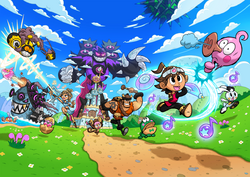
Though Game Freak has mainly developed the Pokémon series since its 1996 debut, it is responsible for five games released since then that were not Pokémon-related. Click Medic, a Japan-only medical simulation game for the PlayStation, plays similarly to Pokémon, though instead of monsters, features a doctor using various vaccines and antibodies to fight against viruses and other maladies inside of a patient's body.
Another game, Drill Dozer, was released for the Game Boy Advance in the interim between the release of Pokémon Emerald and Pokémon Diamond and Pearl, featuring a young girl who operates a drilling machine in order to take down enemies in each of the worlds.
HarmoKnight, a rhythm-based action game for Nintendo 3DS developed by Game Freak, was released in Japan in 2012 and internationally in 2013, via the Nintendo eShop. HarmoKnight also features some music from the Pokémon games.
Pocket Card Jockey, a game that mixes solitaire and horse racing, was released for the Nintendo 3DS in Japan in 2013 and internationally in 2016, via the Nintendo eShop. It was later ported to Android and iOS in Japan, making it the first Game Freak game to be released on a non-Nintendo system since Click Medic.
In March 2015, Game Freak announced Tembo the Badass Elephant, to be published by Sega for PlayStation 4, Xbox One, and Microsoft Windows. It is the first title by Game Freak not released on a Nintendo system since Click Medic. It features the titular elephant fighting against an evil invading army.
In September 2018, Game Freak announced Little Town Hero, a role-playing game unrelated to Pokémon. It was released for the Nintendo Switch on October 16, 2019, as well as on the PlayStation 4 and Windows computers the following year.
Key people
- Satoshi Tajiri (田尻 智), founder, CEO, chairman of the board
- Ken Sugimori (杉森 建), board member, art director
- Jun'ichi Masuda (増田順一), board member, head of development
- Takenori Ōta (太田健程)
- Shigeki Morimoto (森本茂樹)
- Motofumi Fujiwara (藤原基史)
- Kōji Nishino (西野弘二)
Affiliates
- Staff from Ape/Creatures, Inc. (notably Tsunekazu Ishihara and formally Shigesato Itoi as the founder of Ape)
- Staff from Nintendo (notably Shigeru Miyamoto)
- The Pokémon Company
In the games
Game Freak employees appear in every core series game besides Pokémon Legends: Arceus, Scarlet, and Violet. The main reason to visit them is to obtain a diploma (or stamps in the Alola region), awarded after the completion of the Pokédex. In Pokémon HeartGold and SoulSilver, the sound designer gives the GB Sounds after the player has obtained all 8 Kanto Badges.
Their headquarters are located on the third floor of the Celadon Condominiums. They have their own office on 22F of a building in Castelia City, just like in their former real-world office in Carrot Tower. They also have an office on the second floor of a building in Heahea City. In Hoenn, a group of Game Freak employees are on vacation, staying in Lilycove City's Cove Lily Motel; in Sinnoh, a single member is staying at the Hotel Grand Lake; in Unova, there is an office in a building in Castelia Street; in Kalos, the game director can be found staying at the Hotel Coumarine in Coumarine City; in Alola, Game Freak's office can be found in a building of Heahea City on Akala Island; in Galar, a group of Game Freak employees can be found staying in Hotel Ionia in Circhester.
In some of the core games the player can also fight against some members of the Game Freak's team. In Pokémon Black and White, the player can battle a character representing Shigeki Morimoto in the office after stopping Team Plasma. In Black 2 and White 2, they can also battle Kōji Nishino, who uses a Snorlax as his highest leveled Pokémon, a reference to his nickname カビゴン Kabigon, after which Snorlax is named (in the English versions, he calls himself Snorlax). Both Morimoto and Nishino have the Trainer class GAME FREAK. In Pokémon Sun and Moon, the player can battle Shigeki Morimoto in the Game Freak office after becoming Champion, who will give the player an Oval Charm the first time he is defeated. He can be battled once a day. In Pokémon Ultra Sun and Ultra Moon, the player can battle Morimoto again but this time Kazumasa Iwao will also be present and it is a Double Battle against the two. Morimoto reappears once again in Pokémon: Let's Go, Pikachu! and Let's Go, Eevee! with his battle being located at Celadon Condominiums; in Pokémon Sword and Shield, his battle is in Hotel Ionia and in Pokémon Brilliant Diamond and Shining Pearl at the Hotel Grand Lake.
The company itself also appears in Pokémon Sword and Shield as one of the sponsors of Leon, the Champion of the Galar League.
Logo screen

|
This section is incomplete. Please feel free to edit this section to add missing information and complete it. Reason: Screens since Gen VI |
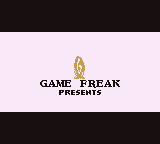
|

|

|
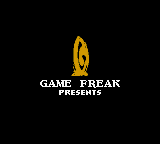
|
| RGBY | RBY | GS | C |
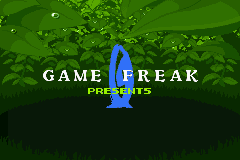
|

|
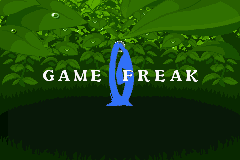
|
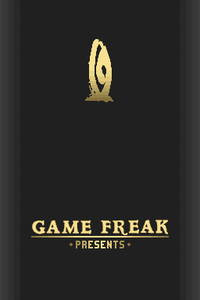
|
| RS | FRLG | E | DP |
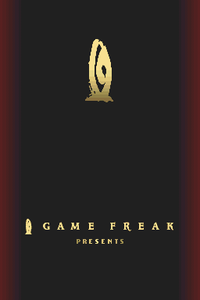
|
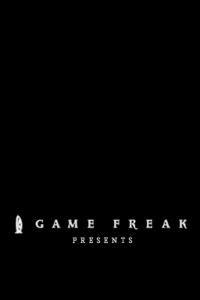
|
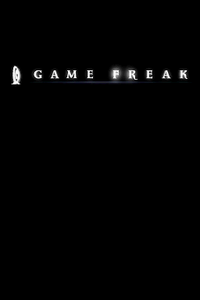
| |
| Pt | HGSS | BWB2W2 |
See also
External links
- Official website (Japanese)
- Official Facebook page (Japanese)
- Game Freak on Wikipedia
- Game Freak on NintendoWiki
- Game Freak on Super Mario Wiki
References
- ↑ Company - Game Freak
- ↑ Game Freak, known as "Pokémon" development company, merged with smartphone game development company Koa Games... - gamebiz.jp
- ↑ The Game Freaks Who Play With Bugs – Discussions on the Video Game Xevious (Japanese: ゲームフリークはバグと戯れる―ビデオゲーム「ゼビウス」論) (Nakazawa Shinichi) (1984) (Translations from Jérémie Pelletier-Gagnon and Tsugumi Okabe for Geemu Media Mix Volume 5, Issue 1, December 2015, University of Alberta, Edmonton, Alberta, Canada)
- ↑ Interview between Masanobu Endo, Satoshi Tajiri, Ken Sugimori - Denfaminicogamer (February 8, 2016)
- ↑ Mew's Origins: A Story of Secrets, Rumors & Legends Ft. maxmoefoe (Pokémon) - DidYouKnowGaming?
- ↑ 6.0 6.1 6.2 [1]
- ↑ https://web.archive.org/web/20230411160732/https://www.chrismcovell.com/JBTribute/comicbook.html
- ↑ https://web.archive.org/web/20230411163827/https://snescentral.com/article.php?id=1107
- ↑ YouTube video by DidYouKnowGaming? citing the book
- ↑ https://archive.is/tS5lL
- ↑ https://archive.is/tS5lL

|
This article is part of Project Mass Media, a Bulbapedia project that aims to write comprehensive articles on official Pokémon publishing, broadcasting, communications, and other media. |




